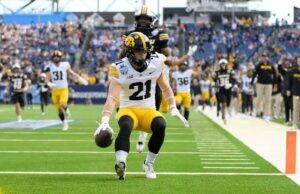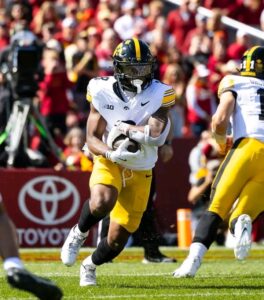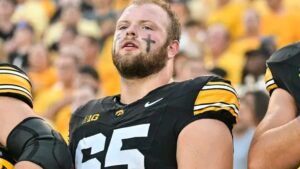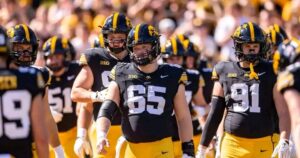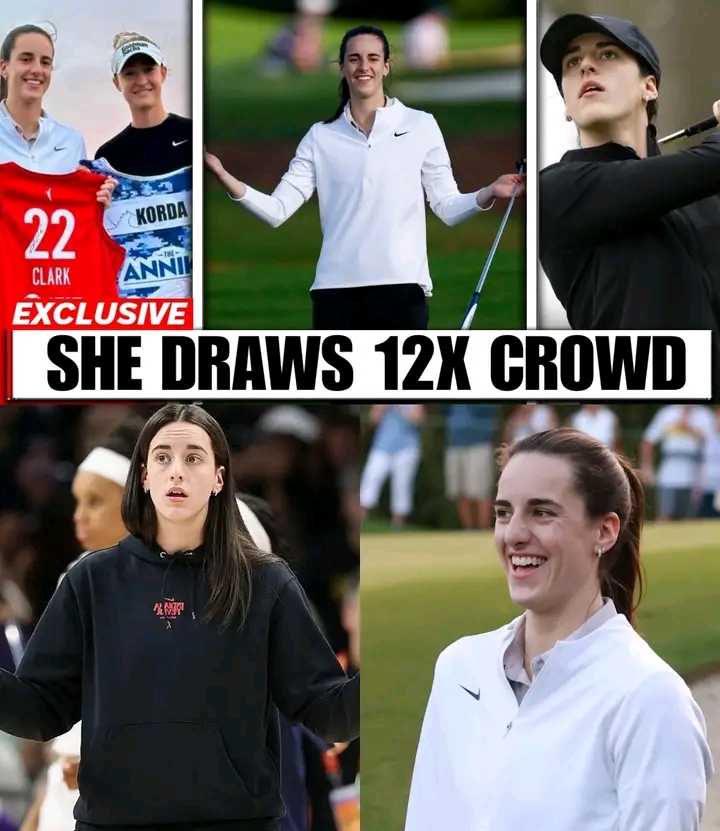
The 1,200% Increase: How Caitlin Clark’s Golf Outing Revealed Two Startling Facts BB: 1,200% this is neither a clickbait headline nor a volatile stock. That is the precise, confirmed increase in Wednesday Pro-Am ticket sales that occurred as soon as Caitlin Clark declared she would play golf at the Annika Pro-Am.
Bellaire, Florida’s Pelican Golf Club ought to have been a picture of peace and quiet. Dew-swept greens, a few devoted fans, and volunteers characterize this quiet hour of professional golf. Instead, the first tee appeared to be a teleportation of a sold-out arena. In the predawn darkness, hundreds of fans were already lining up, many of whom had driven through the night. As seasoned security personnel, they were forced to scramble and call in backup to handle a crowd they had never seen before. The whole story was revealed by a single detail: over half of the crowd was dressed in Indiana Fever jerseys with the number 22 on the back.
A maximum resolution YouTube thumbnail This was no longer a golf competition. It was a phenomenon.
The shock waves hit right away. In a stunning last-minute move, the Golf Channel executives decided to deploy a full, tournament-level production and move their entire studio show 90 minutes earlier. A broadcast apparatus usually saved for the final-round Sunday drama, along with several cameras and graphics packages, were hurried into position. Why? because they realized that a huge thing was taking place. The goal was to capture a cultural moment and the opportunity to turn even a small portion of Clark’s massive fan base into lifelong golf enthusiasts, not just one athlete’s golf swing.
The details only made the story more vivid when Clark herself showed up. She had no borrowed clubs on her person. She was clearly taking this seriously, as evidenced by her custom midnight black Ping wedges that were adorned with gold detailing and her signature “22.” She was there to compete, if only against herself, not for a picture. As usual, she arrived early and worked hard. Nelly Korda was standing next to her on the first t-shirt. This combination was potent and symbolic. After one of the most successful seasons in LPGA history, Korda was more than just a golfer; she was the undisputed number one in the world. It was the pinnacle of one sport welcoming the pinnacle of another.
LPGA officials had never seen a gallery like the one that followed them. Reporters were told by a Texas couple in their 50s who were both wearing Fever jerseys that they had driven more than six hours to watch Clark play nine holes. They had never been to an LPGA event. They had no interest in golf. They were fans of Caitlin. Handmade signs with the words “We Love Caitlin” and “Shoot For Me” written in glitter were pressed against the ropes by young girls. This was the humanized 1,200% spike. These were the new fans—those who were moved by Clark’s tale and prepared to get up at four in the morning to see their hero attempt something entirely different.
Then the truth came. Clark, who admittedly has a 16-handicap, felt anxious in front of hundreds of spectators and the best player in the world. Unceremoniously, her opening tee shot splashed into a water hazard. The fierce competitor’s wince was visible. The core of the Caitlin Clark effect, however, is what transpired next.
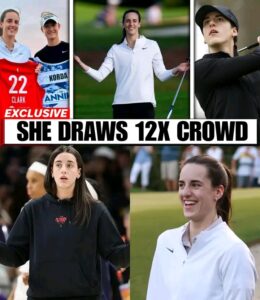
She remained calm. She offered no justification. She turned to face the enormous crowd, smiled that disarming, real smile, and apologized amiably. The audience cheered and laughed. She got a lot of applause when she hit a solid shot after teeing up another ball right away. She showed her vulnerability, her sincerity, and her grace all at once. She demonstrated that golf is really very challenging and that it’s acceptable to fail as long as you keep trying and smile.
Caitlin Clark will miss the rest of the WNBA season due to an injury, according to CBS News. There were many strong moments of solidarity throughout the day. Clark and Korda discussed the mental game, managing social media, and the pressure of public expectations in between holes. Korda later made the shocking revelation that she had first become interested in the WNBA because of Clark’s basketball career. The crossover effect was reciprocal. A jersey exchange, a straightforward yet impactful symbol of respect for one another, punctuated the day and was shared millions of times in a matter of hours.
The tournament’s host, the renowned Annika Sörenstam, joined Clark on the back nine. Sörenstam, a ten-time major champion and possibly the best golfer of all time, walked the fairways alongside Clark, offering insights on being a trailblazer and what it’s like to bear the burden of a whole gender’s expectations in your sport. Sörenstam’s response to the question of whether she had ever seen such a buzz on a Wednesday was prompt and unambiguous: “Not on the LPGA tour.” Never anything like this.
At this point, the narrative changes course and takes on a far deeper meaning. In stark contrast to the treatment she received during her rookie WNBA season, Clark received a warm reception from the golf community, which is frequently perceived as exclusive and traditional.
During that year, Clark was subjected to physical play that frequently veered into dangerous territory, including hits, cheap shots, and egregious fouls that made commentators wonder if the league had a responsibility to protect its players. She had to put up with insulting remarks that were more personal than professional. As if the sold-out arenas and record-breaking TV ratings were a problem to be solved rather than a gift to be celebrated, some veterans and members of the media even engaged in a subtle (and occasionally not-so-subtle) devaluation, asking whether she “deserved” the attention. In golf, however, the reaction was entirely different. It was a clear, universal “welcome.”
She was honored by LPGA professionals. In order to express her gratitude for her support of women’s sports, player Maria Fassi literally chased Clark down the 18th fairway—not for a picture. Her passion was glowingly described by Sörenstam. Korda was appreciative of the fresh perspective she provided during their tour. As she observed the phenomenon from the crowd, LPGA Commissioner Molly Marcoux Samaan referred to Clark as a “box office” and a “true needle mover.”
The figures support it. The LPGA received an estimated 34 million impressions from Clark’s social media posts about the event. Her practice round took up entire segments on mainstream sports channels that hardly ever discuss women’s golf. Caitlin Clark’s LPGA Tour morning: Pured drives, shanked shots, and an enormous fan base—Yah Sports Clark was not viewed as a threat by the golf community. They viewed her as a talent that transcends generations and that everyone benefits from her presence. They knew that all boats are lifted by a rising tide, particularly one this great.
It’s critical to comprehend the point. Caitlin Clark has no plans to pursue a career in professional golf. Like the rest of us, she hits bad shots, struggles to break 100, and scores in the mid-80s. The point is that. Millions of young girls who never imagined themselves in that world find golf normalized when they see the world’s most exciting basketball player having fun, laughing off errors, and celebrating birdies. It dispels the idea that golf is exclusive or reserved for a select few.
She now serves as a human link between audiences, sports, and the younger generation and the traditional world. Clark has already promised to visit the Annika again in 2025, so this will become a yearly occurrence. She brings the same contagious energy and sincere dedication whether she’s bombing a drive or draining a logo three. That’s her real, indisputable gift. It’s beneficial for golf and basketball, and it serves as a potent reminder that true greatness has no bounds.
